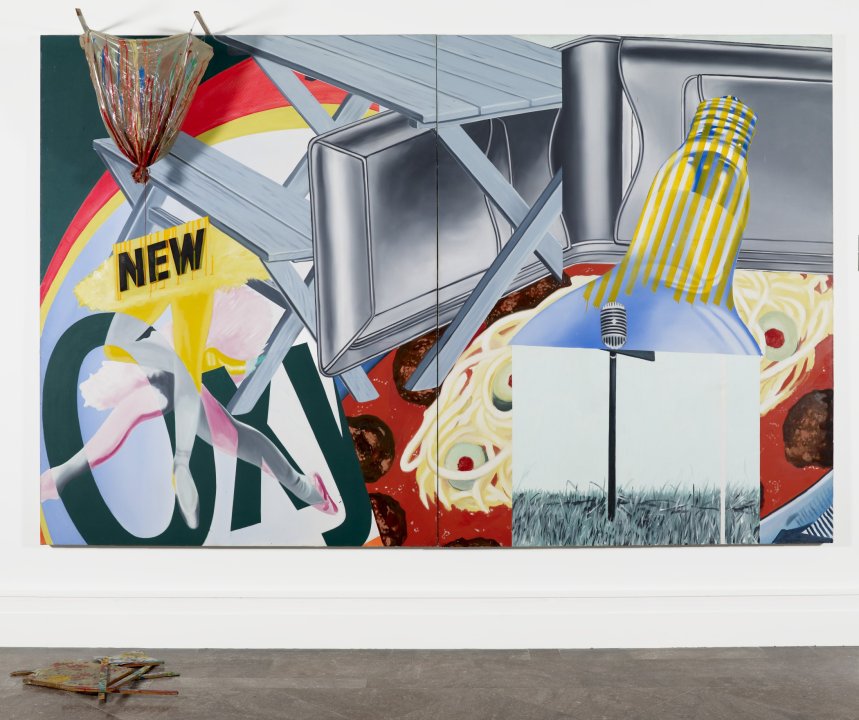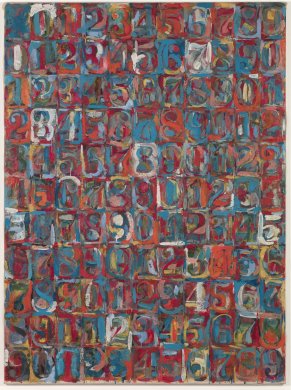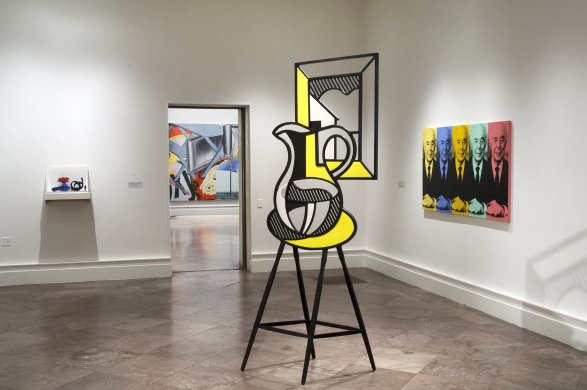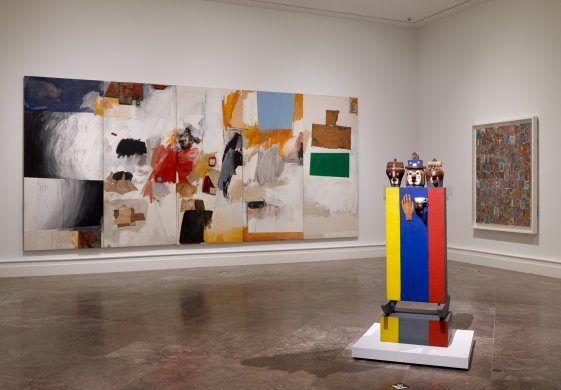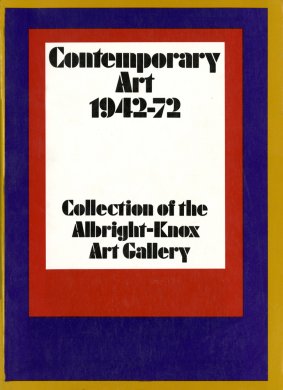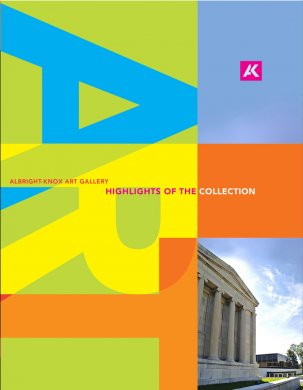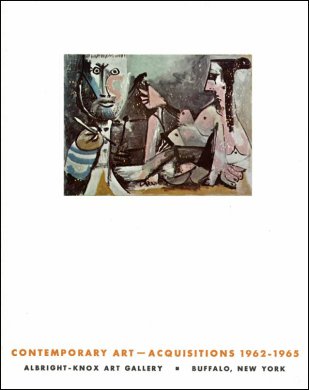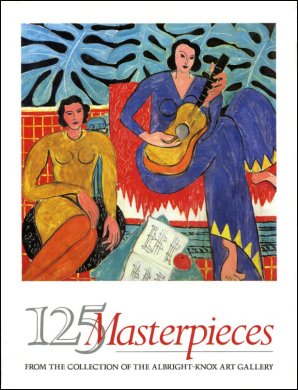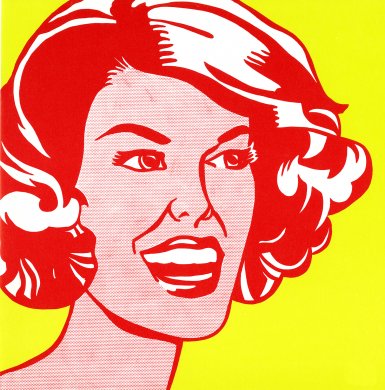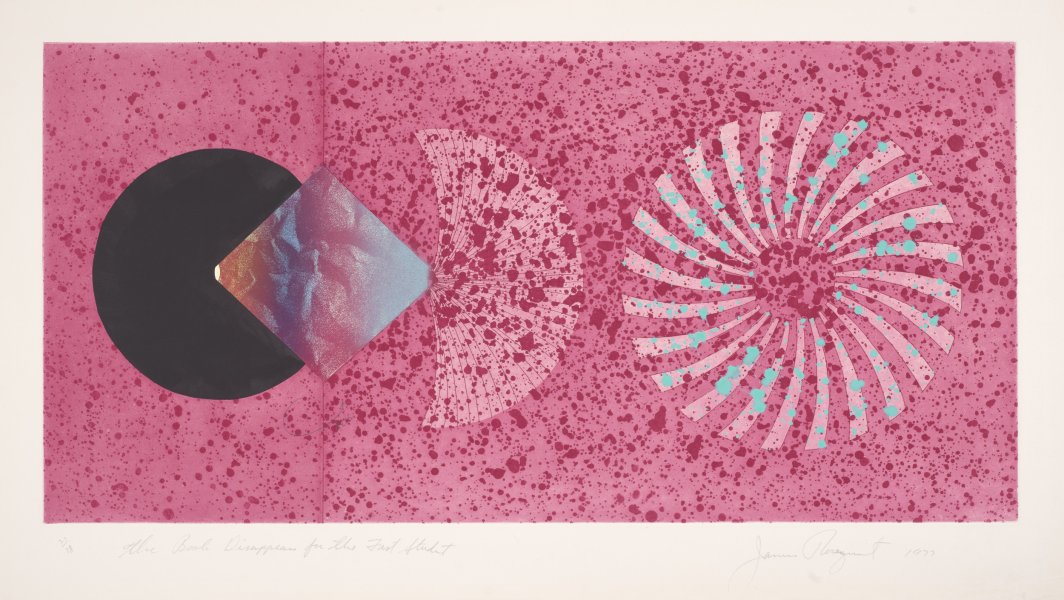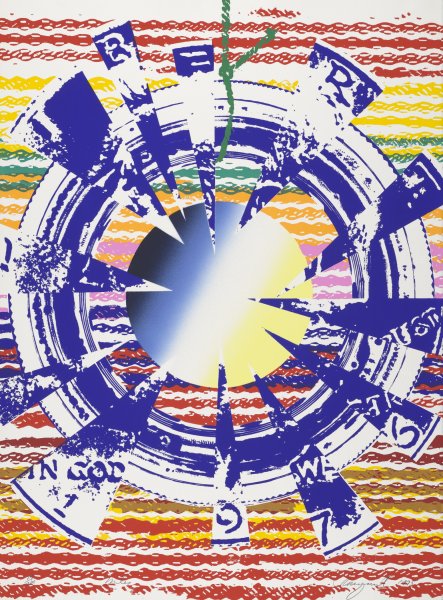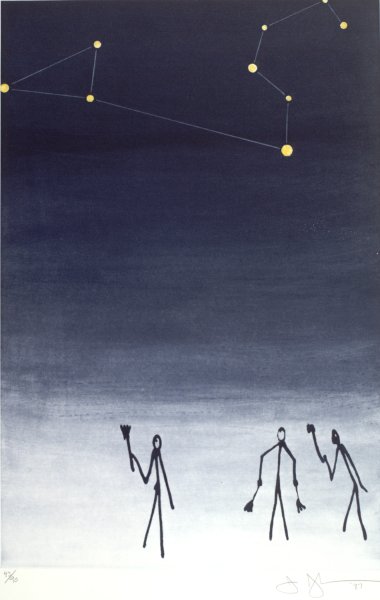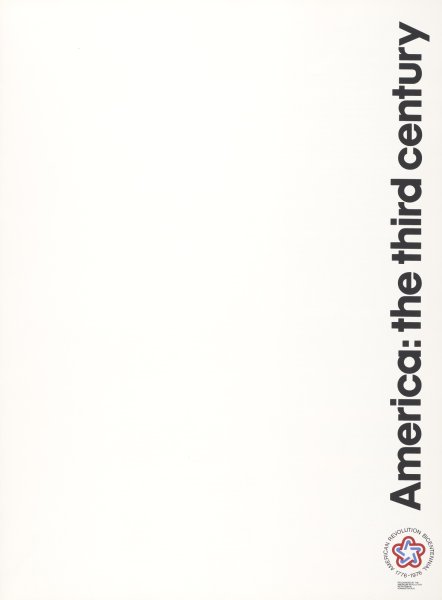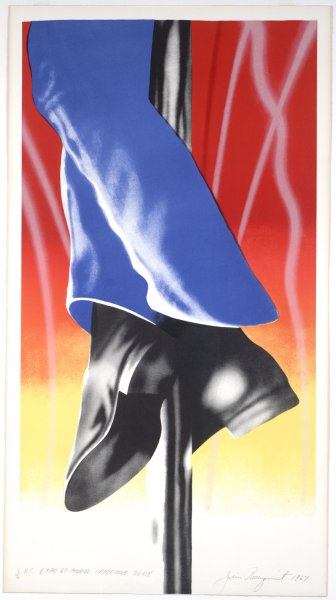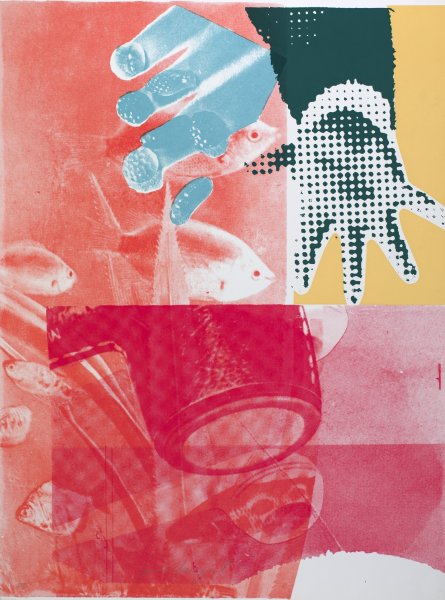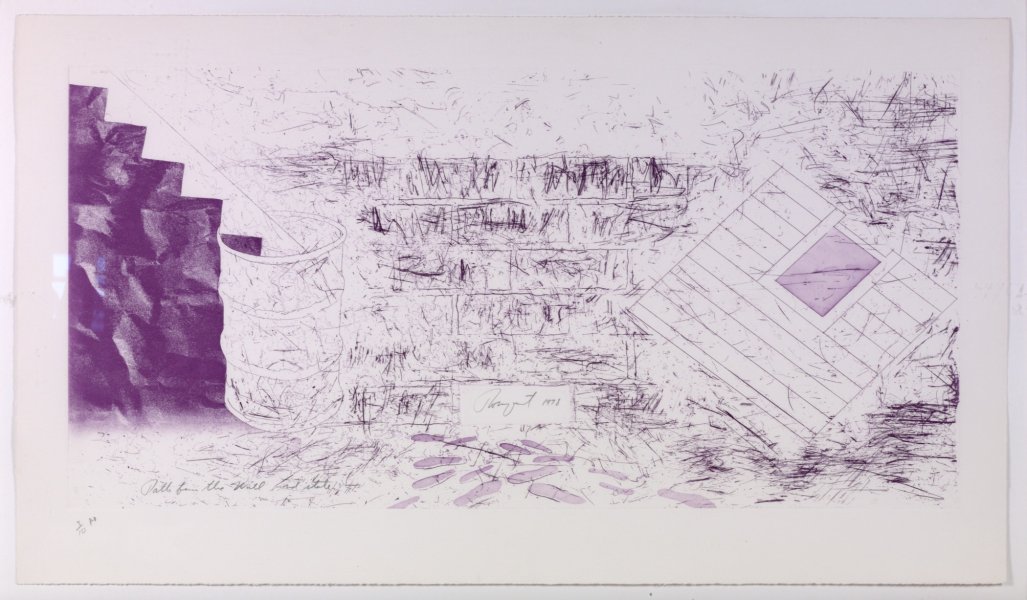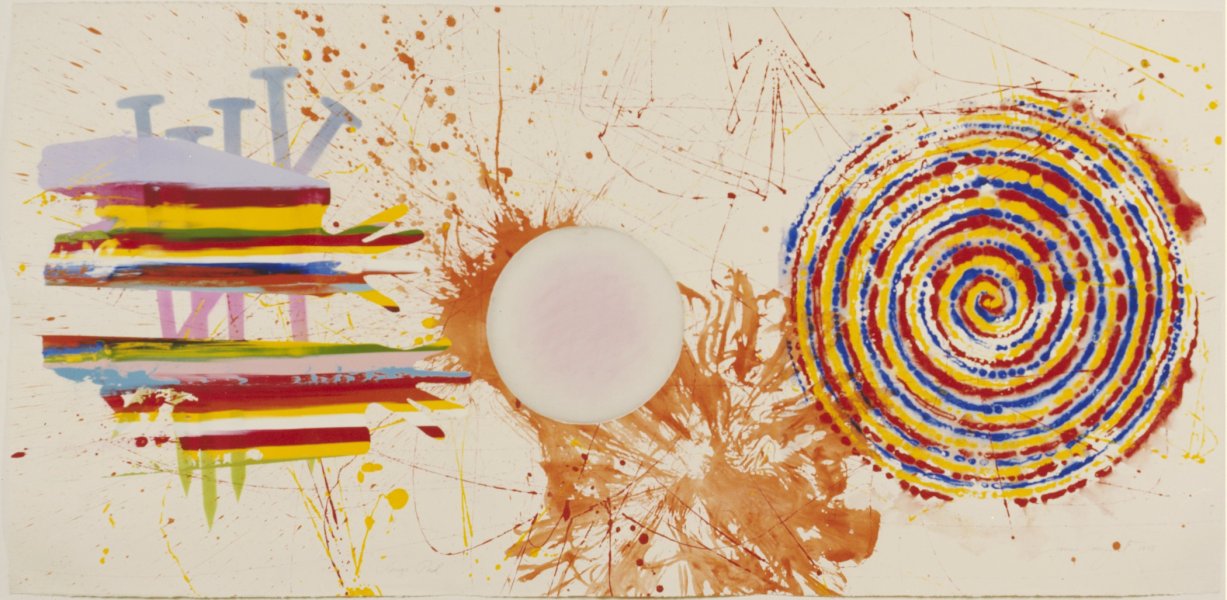James Rosenquist
American, 1933-2017
Nomad, 1963
Artwork Details
Currently on View
Collection Highlight
Materials
oil on canvas, plastic and wood
Measurements
panel 1 (support): 90 1/8 x 70 inches (228.9175 x 177.8 cm); panel 2 (support): 90 1/8 x 70 inches (228.92 x 177.8 cm); overall (support): 90 1/8 x 140 x 25 inches (228.9175 x 355.6 x 63.5 cm)
Collection Buffalo AKG Art Museum
Credit
Gift of Seymour H. Knox, Jr., 1963
Accession ID
K1963:25
James Rosenquist’s large-scale paintings are visual time capsules. The artist aimed to emulate society's bombardment with imagery by cohering fragments of illustrations and photographs primarily borrowed from advertising and mass media. Nomad combines multiple references to consumer products, leisure time, and items from everyday life. Rosenquist brought these disparate compositional elements together with repeated motifs; for example, the X from the Oxydol powdered soap label echoes the legs of the ballet dancer and those of the picnic table and bench. Rosenquist worked as a commercial billboard painter during his first year of college and likened this work to “a composite billboard, providing no central focal point; the eye of the viewer tends to wander over the surface, attracted first to one area and then another, like the nomad of the title.”
A component attached to the upper-left corner of the canvas creates the illusion of paint trickling onto a wood construction below. This element is possibly a reference to a major artistic movement of the previous decade, Abstract Expressionism, and the drip paintings of Jackson Pollock, who significantly influenced Rosenquist.
Label from Giant Steps: Artists and the 1960s, June 30–December 30, 2018
